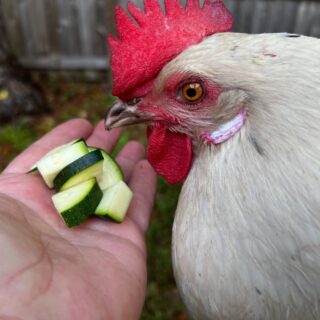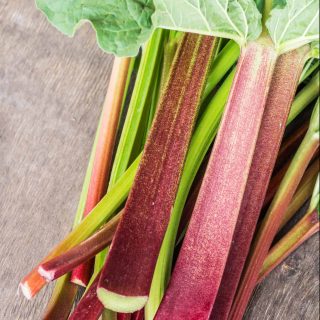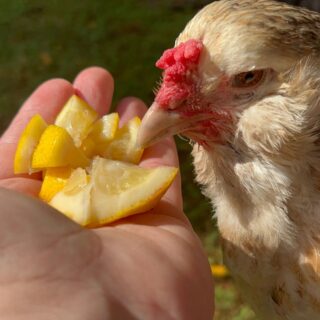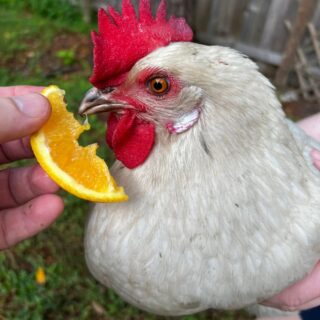When you think of holiday meals there are a few things that come to mind; oven roasted turkey, glazed honey ham, and, possibly best of all, fresh, homemade cranberry sauce. And since we all love cranberries so much, we want to share them with all of our furry and feathered friends. Right? Before you do, though, maybe ask yourself can chickens eat cranberries?
Keep on reading to find out if your chickens can enjoy the holidays as much as you do!
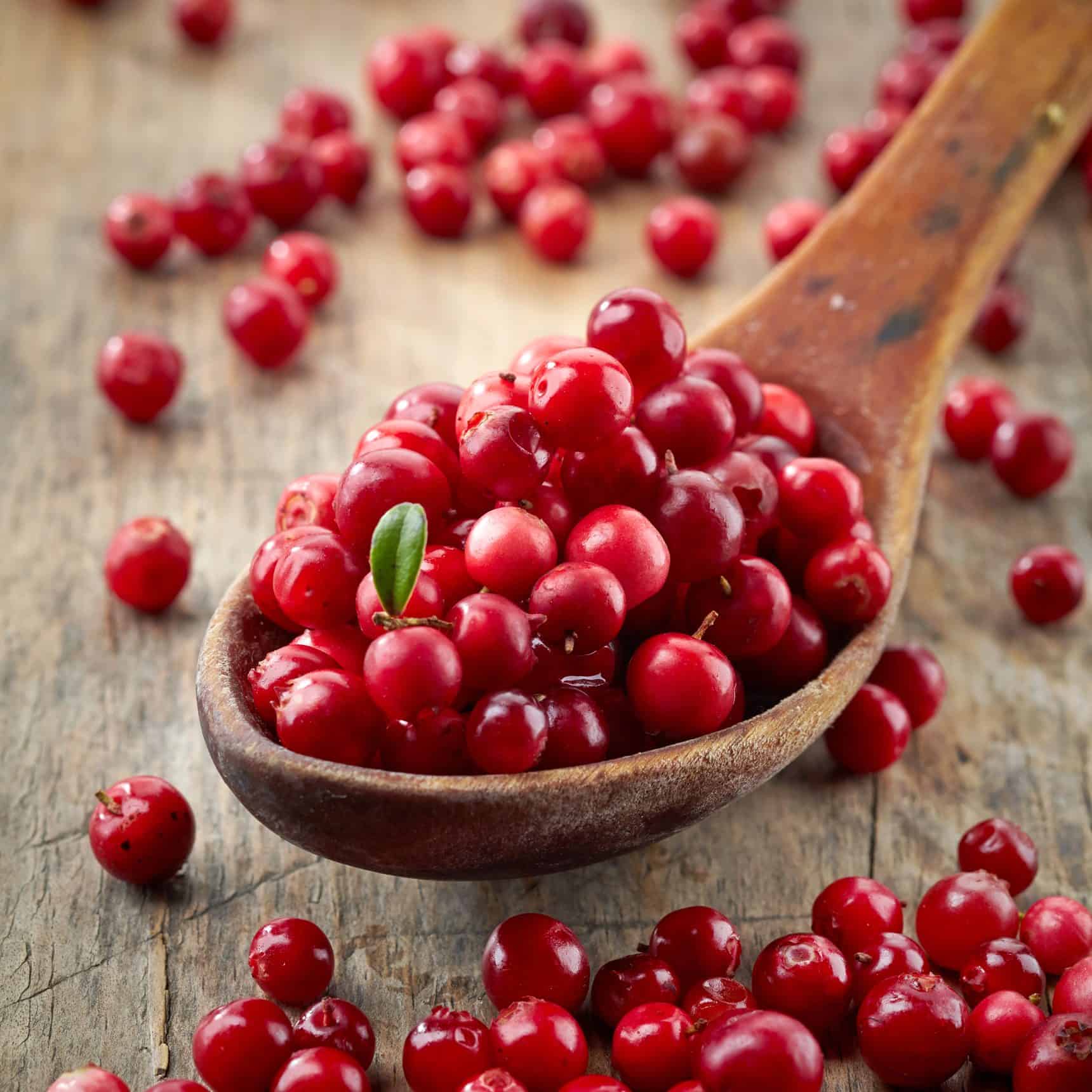
[ez-toc]
Can Chickens Eat Cranberries?
Yes, chickens can eat cranberries. They are packed with dense nutrients like Vitamin A and Vitamin C and make an excellent treat for your chickens. They can be fed whole, raw, dried, dehydrated or cooked as long as extra sugar is not added.
Is it safe for a chicken to eat cranberries?
Are cranberries a safe snack for your chickens? Yes and no. As we mentioned, cranberries can actually be very healthy (more on that in a minute) but, they do have a lot of sugar in them.
In order to maintain good health, chickens need to have a well balanced diet, typically from foraging and a quality feed with a specific chicken focused recipe.
Unfortunately, if they eat too many cranberries, or any especially sweet fruit likewhen chickens eat figs, when chickens eat papaya or when chickens eat raspberries it can throw their blood sugar levels off and they can become hypoglycemic.
If you need more help with taking care of your chickens, check out The Organized Chicken Keeper for a complete system for managing their health through keeping their supplies stocked and coop clean.
Can chickens eat fresh cranberries?
Yes, chickens can eat fresh cranberries. You can't go wrong with fresh cranberries. They are juicy, ripe, and an almost perfect snack for your chickens. The only bad thing about them is they can be a little tough to chew and sometimes digest.
Can chickens eat cooked cranberries
Yes, chickens can eat cooked cranberries. You can bake them, stick them in a skillet, or even just boil them for a bit to cook cranberries for your chickens. The primary reason for this is it make the softer and, thus, easier to chew and digest. This method will eliminate upset stomachs and most choking hazards. The only drawback is it can be time consuming.
Can chickens eat dried cranberries
Probably not. Dried cranberries can be a little problematic. Remember that part earlier about the high amount of sugar? Dried cranberries actually have an even higher concentration of sugar.
What we mean is, when you dry cranberries, all of the moisture is removed and all that is left is the shriveled flesh or fruit. Since there is no water to dilute the sugar content, it's even harder for the chicken's body to balance out the sugar.
If you want to feed them dried cranberries don't feed them ones you bought from the store. Almost every pack of dried cranberries you can find in a store is soaked in sugar or syrup prior to dehydrating. So they have even MORE sugar!
Your best bet is to use fresh cranberries and dry them out yourself.
Can my chicken eat craisins?
No, chickens cannot eat craisins as they usually have sugar in them. Craisins are just a brand name for dried cranberries; playing off the more popular dried grape snack, raisins. Although, chickens can eat grapes.
The same rules apply for craisins as any store bought dried cranberries. Unless they explicitly say they have no sugar in them, assume they are loaded.
Can chickens eat cranberry sauce?
No, chickens can't eat cranberry sauce. Most all cranberry sauce (unless you just cook and smush your own at home) is going to be jam packed full of sugar which is a big no-no for feeding your chickens.
Hypoclycemia in chickens
Hypoglycemia? Isn't that a human disease? It is, but it's not exclusive to us. Many animals can suffer from it, like dogs (usually small dogs) and, as you now know, chickens.
So, what is hypoglycemia? Hypo as a prefix means " low, under, beneath, down, or below normal" and glycemia pertains to glucose being in the bloodstream. Put them together and it essentially means that the chicken does not have enough glucose in their system. Since glucose is the body's main source of energy not having enough means important body functions are not able to operate at peak performance. If that goes on too long it can be very dangerous; and not just for chickens.
When sugar is consumed the body breaks it down into glucose, which then enters the bloodstream and is carried throughout the body providing the energy needed to function. When we get too much glucose, the body doesn't know what to do with it and burns it off very quickly leading to a sharp drop in blood sugar level. Kind of like that wonky feeling that comes if you eat a candy bar for breakfast and then a late lunch.
At best, it is a very uncomfortable and disorienting feeling. At worst, it can lead to unconsciousness and even, in some cases, death.
Are cranberries healthy for chickens?
Now, cranberries are not nearly as scary as that last part may have made them sound. Like we said, hypoglycemia can happen with an excessive amount of cranberries. If you want to feed your chickens 1, 2, maybe 3 fresh cranberries at a time, they should be okay.
Let's at some of the other nutrients found in cranberries.
What are the nutritional benefits of cranberries for chickens?
Cranberries, despite having a lot of sugar, have plenty of other really good nutrients that your chicken can use to grow and stay healthy and strong.
The table below, courtesy of the USDA FoodData Center, has a breakdown of the nutritional analysis based on a serving size of 1 cup whole, fresh cranberries (100g).
| Name | Amount | Measurement |
|---|---|---|
| Water | 87.300 | g |
| Energy | 46.000 | kcal |
| Protein | 0.460 | g |
| Fat | 0.130 | g |
| Carbohydrate | 12.000 | g |
| Fiber | 3.600 | g |
| Sugars | 4.270 | g |
| Sucrose | 0.160 | g |
| Glucose | 3.440 | g |
| Fructose | 0.670 | g |
| Calcium, Ca | 8.000 | mg |
| Iron, Fe | 0.230 | mg |
| Magnesium, Mg | 6.000 | mg |
| Phosphorus, P | 11.000 | mg |
| Potassium, K | 80.000 | mg |
| Sodium, Na | 2.000 | mg |
| Zinc, Zn | 0.090 | mg |
| Copper, Cu | 0.056 | mg |
| Manganese, Mn | 0.267 | mg |
| Selenium, Se | 0.100 | µg |
| Vitamin C | 14.000 | mg |
| Niacin | 0.101 | mg |
| Pantothenic acid | 0.295 | mg |
| Vitamin B-6 | 0.057 | mg |
| Folate, total | 1.000 | µg |
| Carotene, beta | 38.000 | µg |
| Vitamin A, IU | 63.000 | IU |
| Vitamin E (alpha-tocopherol) | 1.320 | mg |
| Vitamin K (phylloquinone) | 5.000 | µg |
| Riboflavin | 0.02 | mg |
What do these nutrients do?
The table above may not mean much to you if you don't have context. Here is a list of some of the most beneficial nutrients so this chart can be more than just a bunch of weird words and numbers.
- Vitamin A: eye, skin, respiratory, and digestive health
- Antioxidants: (Beta Carotene, Lycopene) repair damage from free radicals, fight off/prevent future damage, protect from oxidative damage, anti-inflammatory, lower blood pressure, improve heart health in high enough doses, development and health of tissue, skin, and feathers
- Vitamin B6: healthy blood vessels, eye/vision health, nervous system , immune system
- Vitamin C: joint, cellular, and immune health; collagen synthesis
- Calcium: bones and egg shell strength
- Vitamin E: immune system support, cell regeneration
- Fiber: only small amounts or they can become constipated, get a blockage, etc; energy, growth, and digestive health, reduce cholesterol, controls blood sugar, digestive health
- Folate (B Vitamin): folate deficiency; helps blood formation; healthy feathers & size
- Iron: prevents anemia
- Vitamin K: blood clotting, bone metabolism
- Magnesium: bone strength and development, cellular metabolism, heart health, muscle function
- Manganese: bone development, immune system, breaks down carbs, cholesterol, and amino acids; controls blood sugar
- Phosphorus: bone formation
- Potassium: temperature control; hydration & electrolyte regulation, metabolism; heart health/heart disease preventative
- Protein: muscle growth and development
- Riboflavin: immune system
How do you feed cranberries to chickens?
First, just pick out the type of cranberries you will be feeding, fresh, cooked, raw or something else. If you are feeding uncooked cranberries, you will want to wash them off first.
Then, since they are pretty much the perfect size already, you can pretty much just take them out and give them to your chickens. You can feed them to your chickens out of your hand, mixed into the feed, or sprinkled on the ground.
Cranberries as boredom buster
Turn their treat into a toy! Take a needle and some fishing line and string a bunch of cranberries like you're making Christmas decorations. Then find a place to hang it where your chickens will be hanging out. They will enjoy pecking at the bright red berries and will have fun chasing and dodging the string when it starts to swing. Throw in some frozen blueberries, blackberries, or cherries, to add some more color and variety.
The toy method works with fresh, cooked, and, dried cranberries.
Frequently Asked Questions
Q1. Can I overfeed my chicken cranberries?
You can absolutely overfeed your chicken cranberries. As we mentioned earlier, too many cranberries can lead to a nutrient imbalance, hypoglycemia, and other health problems.
When giving any kind of treat outside of our chickens' normal feed and scratch diet, we stick to the 90/10 rule. This simply means that the vast majority of your chickens' diet should come from good, quality sources, like a specialized feed and what they catch free ranging. 10% of their diet can be snacks and other, more unconventional, foods, like rice, kiwi, popcorn, peanuts, or mango.
Q2. How many cranberries can I feed my chickens?
We recommend no more than 10% of your chickens' diet should be snacks or treats. For cranberries, in particular, we think 2 or 3 fresh or cooked cranberries should be fine. Only 1 or ,that, for dried cranberries.
Q3. How often can I feed cranberries to my chickens?
If you are sticking to a healthy chicken feed and the flock looks good and healthy, you can probably feed them cranberries a couple times a week.
Q4. Can I feed cranberries to my baby chicks?
Cranberries for chicks can be doubly dangerous. For one, baby chicks are going to be even more sensitive to the sugar in cranberries than adult birds. And two, with chicks being so small, cranberries can become a choking hazard. It's possible that you can give your baby chickens cranberries but it is not advised.
Need some help keeping your chickens health and care taken care of? Check out the Organized Chicken Keeper for an easy to follow system.

